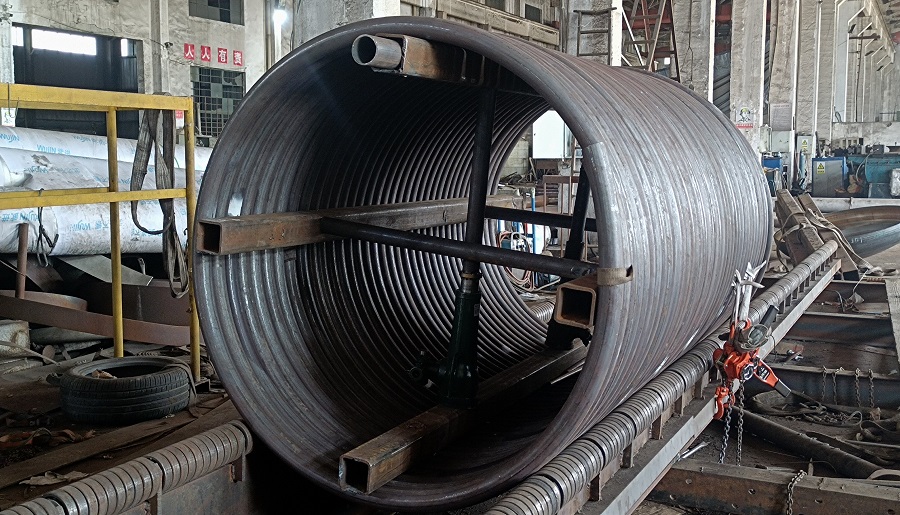What is Helical Pipe Coil?
2023-12-04Leave a message
What is Helical Pipe Coil?
A helical pipe coil is a specific geometric arrangement of a pipe, where the pipe is coiled in a helical or spiral pattern. This design is commonly used in various industrial applications for purposes such as heat transfer, fluid transportation, and process control. The helical coil configuration provides several advantages, including increased surface area for heat exchange and efficient use of space.
Helical Pipe Coil Welding:
Welding is a crucial aspect of manufacturing helical pipe coils. The welding process involves joining the individual segments or turns of the pipe to form a continuous, helically coiled structure. The welding method employed can vary based on the material of the pipe and the specific requirements of the application. Common welding techniques include:
1. Submerged Arc Welding (SAW): This method involves melting the welding wire and flux beneath a layer of granular flux. It is often used for welding thick-walled pipes.
2. Gas Metal Arc Welding (GMAW): Also known as MIG (Metal Inert Gas) welding, this process uses a consumable wire electrode and shielding gas to join the pipe segments.
3. Gas Tungsten Arc Welding (GTAW): Also known as TIG (Tungsten Inert Gas) welding, this method uses a non-consumable tungsten electrode and inert gas for welding. It is suitable for thin-walled pipes and provides precise control.
Helical Pipe Coil and Heat Transfer:
The helical pipe coil configuration is advantageous for heat transfer applications due to the following reasons:
1. Increased Surface Area: The helical shape maximizes the surface area of the pipe in contact with the surrounding environment. This increased surface area enhances heat transfer efficiency.
2. Turbulent Flow: The helical pattern induces turbulence in the fluid flow inside the pipe, promoting better mixing and heat exchange. Turbulent flow helps overcome the boundary layer and improves thermal contact.
3. Compact Design: The coiled structure allows for a more compact design, which is beneficial in applications where space is limited.
Helical Pipe Coil Applications:
1. Heat Exchangers: Helical pipe coils are commonly used in the construction of heat exchangers for various industrial processes.
2. Boilers: In boiler systems, helical coils can be employed to improve heat transfer efficiency.
3. Solar Water Heaters: The increased surface area of helical coils makes them suitable for absorbing and transferring solar energy in solar water heating systems.
4. Chemical Processing: Industries involved in chemical processing may use helical coils for heating or cooling fluids during manufacturing.
5. Refrigeration Systems: Helical pipe coils can be integrated into refrigeration systems for heat exchange purposes.
6. Oil and Gas Industry: Helical coils may be used in the oil and gas industry for applications such as heat recovery and preheating fluids.
7. HVAC Systems: Heating, ventilation, and air conditioning systems can incorporate helical coils for heat exchange.
In summary, helical pipe coils find widespread application in industries requiring efficient heat transfer and fluid handling. The coiled design, welding techniques, and enhanced heat transfer properties make them suitable for a range of industrial processes.


